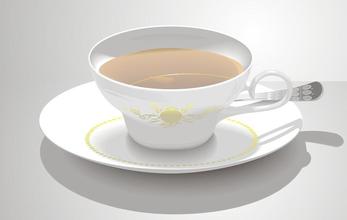Introduction to the Variety characteristics of Colombian Coffee Flavor description treatment
Introduction to the Variety characteristics of Colombian Coffee Flavor description treatment
Columbia Pavilion official Mercio Prada told Xinhua that the venue held a two-week coffee exhibition for visitors to taste Colombian coffee and introduce and promote Colombian coffee and coffee culture to tourists from China and around the world.
Jamie Valencia, a history professor who participated in the construction of the Columbia Pavilion, said that as tourism between Colombia and China heats up, cultural exchanges between the two countries will become more frequent. "although Chinese people like to drink tea, it is not impossible to gradually change some of their food culture, and now there are some changes," he said. "
He said that thousands of Chinese people had tasted Colombian premium coffee at the Shanghai World Expo, which opened a window for Chinese people to understand Colombian coffee and coffee culture.
One: it is said to come from the sea island of the Caribbean and from El Salvador in Central America.
Second: in 1808, a priest introduced coffee beans to Colombia for the first time from the French Antilles via Venezuela. One of them is that Colombia's first coffee seeds were imported from Venezuela through the province of Santander.
Third: the earliest records of coffee cultivation in Colombia appear in the book "The Illustrated Orinoca" written by Jose Gumilla, a Spanish missionary. He describes what he saw when he preached on both sides of the Meta River in 1730, in which he mentioned the local coffee plantation. By 1787, other missionaries had spread coffee to other parts of Colombia.
The main varieties of Colombian coffee are small grains of coffee. Plants are small trees or large shrubs, 5-8 m tall, usually much branched at base; old branches gray-white, nodes dilated, young branches glabrous, compressed. Leaves thinly leathery, ovate-lanceolate or lanceolate, 6-14 cm long and 3.5-5 cm wide, apex long acuminate, acuminate part 10-15 mm long, base cuneate or slightly obtuse, rarely rounded, entire or shallowly wavy, both surfaces glabrous, lower vein axils with or without small pores; midrib raised on both surfaces of leaf, 7-13 on each side of lateral veins; petiole 8-15 mm long Stipules broadly triangular, arising from the tip of the upper part of the young branch conical or awn tip, the tip of the old branch is often protruding tip, 3-6 mm long. Cymes several clustered in leaf axils, each with 2-5 flowers, without a total pedicel or with a very short peduncle; flowers fragrant, with pedicels 0.5-1 mm long; bracts base ±connate, dimorphic, 2 broadly triangular, nearly equal in length and width, the other 2 lanceolate, 2 times as long as wide, leaf-shaped; calyx tubular, 2.5-3 mm long, calyx eaves truncate or 5-denticulate. Corolla white, length varies from breed to breed, generally 10-18 mm long, apically often 5-lobed, rarely 4-or 6-lobed, lobes often longer than Corolla tube, tip often obtuse; anthers protruding from Corolla tube, 6-8 mm long; style 12-14 mm long, stigma 2-lobed, 3-4 mm long. Berries broadly elliptic, red, 12-16 mm long, 10-12 mm in diameter, exocarp dura, mesocarp fleshy, sweet at maturity; seeds raised abaxially, ventral flat, longitudinally grooved, 8-10 mm long and 5-7 mm in diam. Florescence from March to April

Important Notice :
前街咖啡 FrontStreet Coffee has moved to new addredd:
FrontStreet Coffee Address: 315,Donghua East Road,GuangZhou
Tel:020 38364473
- Prev

Ethiopia, where coffee is produced Sidamo Charkiso flavor description processing method Introduction
Ethiopia where rich in coffee Sidama Shaqisuo producing area flavor description of the treatment method introduced coffee as pure as a thoroughbred horse Ethiopia in different climatic zones have coffee, so there are more than 140 farm varieties, perennial fresh coffee production. The quality of Ethiopian coffee varies according to different altitudes and geographical ecological environments. Harar in the Southeast Highlands
- Next

Introduction to the Variety characteristics of Brazilian Minas Sun Yellow bourbon Coffee Flavor description
Brazilian Minas Yellow bourbon Coffee Flavor description Variety characteristics introduce that the proportion of Brazilian coffee production in export income has plummeted. In the past 30 years, with the rise and development of Brazilian modern industry, especially steel, shipbuilding, automobile, aircraft manufacturing and other industries, the status of coffee in the national economy has declined year by year, but it is still one of the pillars of Brazil's economy. And Brazil is still
Related
- Detailed explanation of Jadeite planting Land in Panamanian Jadeite Manor introduction to the grading system of Jadeite competitive bidding, Red bid, Green bid and Rose Summer
- Story of Coffee planting in Brenka region of Costa Rica Stonehenge Manor anaerobic heavy honey treatment of flavor mouth
- What's on the barrel of Blue Mountain Coffee beans?
- Can American coffee also pull flowers? How to use hot American style to pull out a good-looking pattern?
- Can you make a cold extract with coffee beans? What is the right proportion for cold-extracted coffee formula?
- Indonesian PWN Gold Mandrine Coffee Origin Features Flavor How to Chong? Mandolin coffee is American.
- A brief introduction to the flavor characteristics of Brazilian yellow bourbon coffee beans
- What is the effect of different water quality on the flavor of cold-extracted coffee? What kind of water is best for brewing coffee?
- Why do you think of Rose Summer whenever you mention Panamanian coffee?
- Introduction to the characteristics of authentic blue mountain coffee bean producing areas? What is the CIB Coffee Authority in Jamaica?

